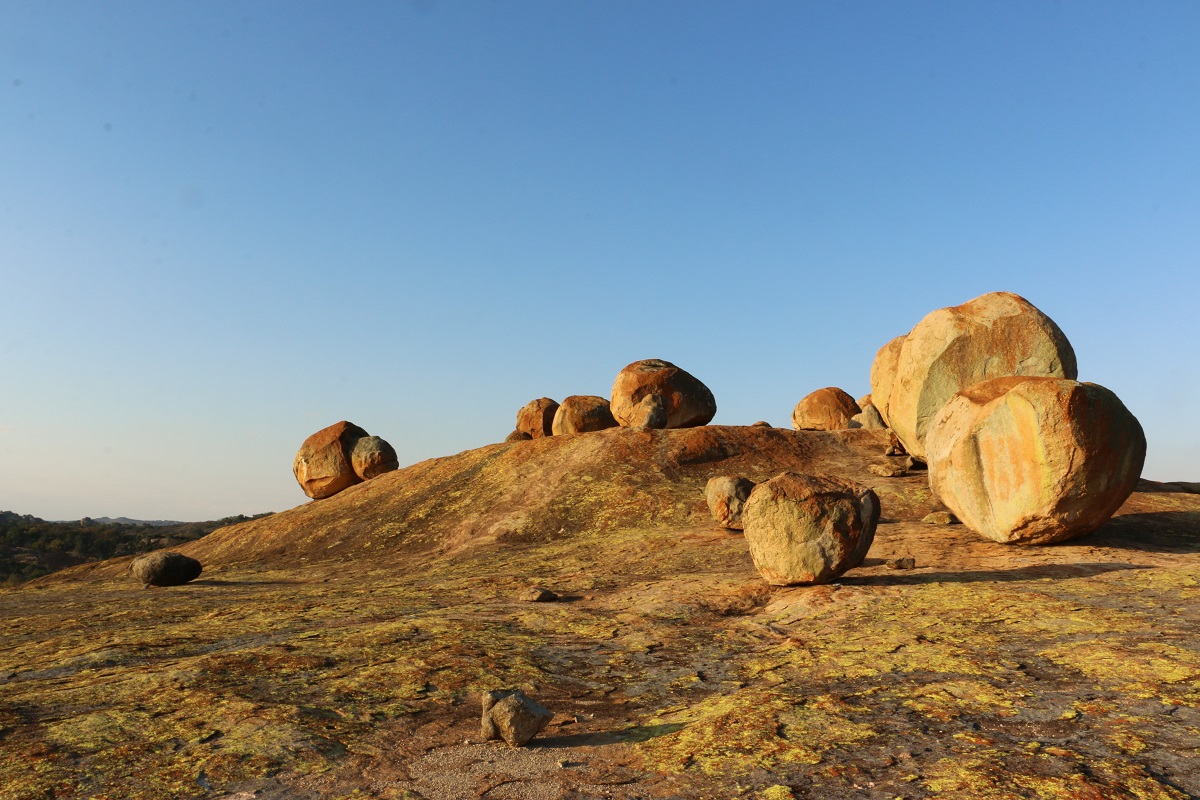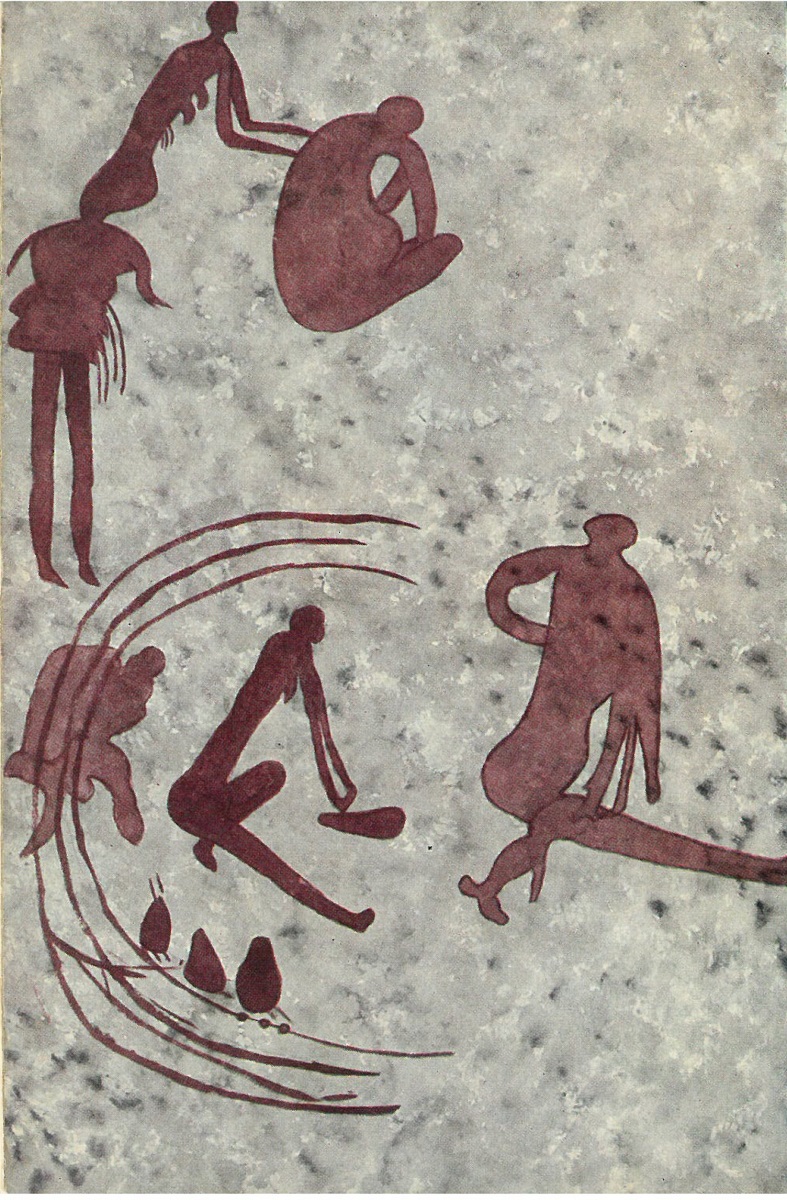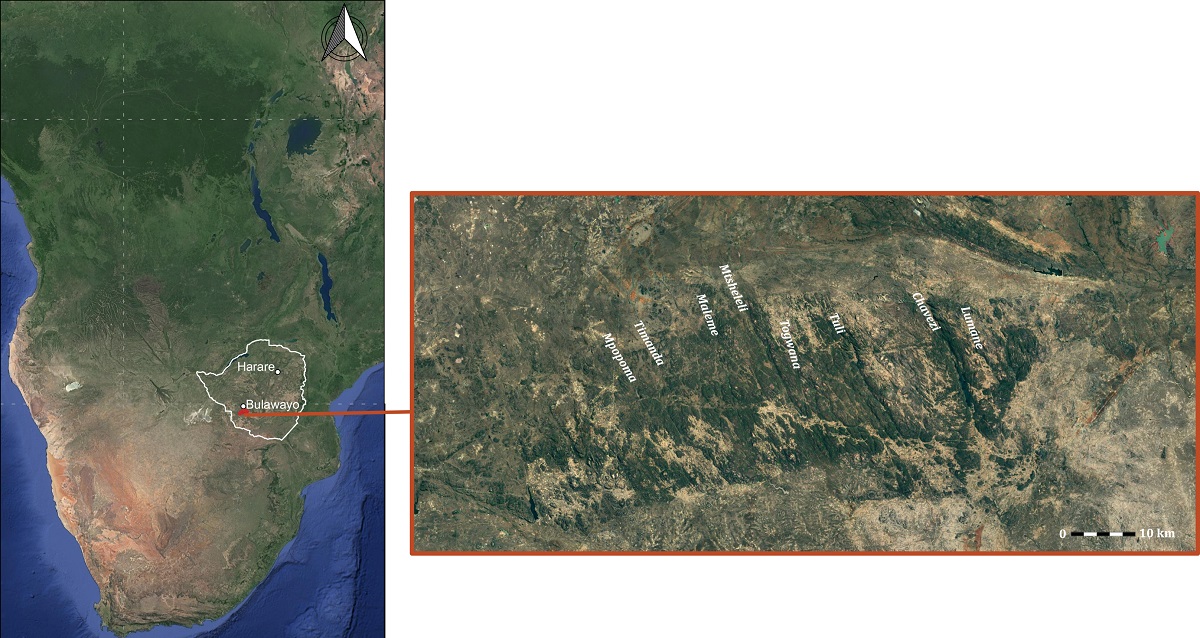-
The Matobo Hills today
En savoir plus...
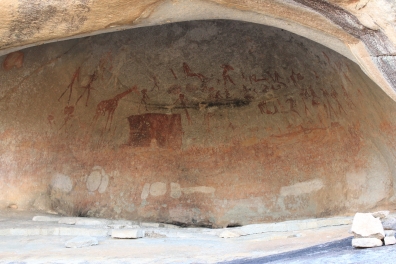 The Matobo UNESCO World Heritage Landscape lies about 35 km south of Bulawayo, the country’s second largest city, in south-western Zimbabwe. It covers an area of about 3100 km² which includes the Matobo National Park, established in 1926 as the Rhodes Matopos National Park and famous for its wilderness, communal lands, and a small part of commercial farmland. It is a rocky landscape broken by several valleys that make up the famous undulating viewscape endowed with a unique natural, cultural, and living heritage. The Hills contain a rich archaeological and historical heritage, and notably one of the highest concentrations of prehistoric hunters-gatherers’ rock paintings in Southern Africa. Some painted sites can be visited (Pomongwe, Nswatugi, White Rhino, Silozwane). A small…
The Matobo UNESCO World Heritage Landscape lies about 35 km south of Bulawayo, the country’s second largest city, in south-western Zimbabwe. It covers an area of about 3100 km² which includes the Matobo National Park, established in 1926 as the Rhodes Matopos National Park and famous for its wilderness, communal lands, and a small part of commercial farmland. It is a rocky landscape broken by several valleys that make up the famous undulating viewscape endowed with a unique natural, cultural, and living heritage. The Hills contain a rich archaeological and historical heritage, and notably one of the highest concentrations of prehistoric hunters-gatherers’ rock paintings in Southern Africa. Some painted sites can be visited (Pomongwe, Nswatugi, White Rhino, Silozwane). A small… -
The Matobo Hills in History
En savoir plus...
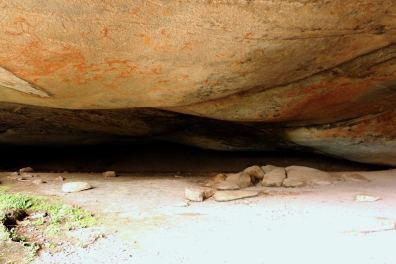 The human history in Zimbabwe spans more than a million years. It is divided into the Stone Age, Farming Communities period (i.e. Iron Age), and Historical Period. The Stone Age is further divided into the Earlier Stone Age (ESA), Middle Stone Age (MSA) and the Later Stone Age (LSA). Although the Matobo displays some of the earliest evidence of human history in Zimbabwe, it is poorly characterised here. The hand axes and cleavers recovered at sites (Bambata, Pomongwe, Nswatugi) have no secure contexts to enable absolute dating. Substantial information is available for the MSA and the LSA for which Matobo material has played a key role in defining the cultural sequence in Zimbabwe and parts of Botswana (Walker and Thorp, …
The human history in Zimbabwe spans more than a million years. It is divided into the Stone Age, Farming Communities period (i.e. Iron Age), and Historical Period. The Stone Age is further divided into the Earlier Stone Age (ESA), Middle Stone Age (MSA) and the Later Stone Age (LSA). Although the Matobo displays some of the earliest evidence of human history in Zimbabwe, it is poorly characterised here. The hand axes and cleavers recovered at sites (Bambata, Pomongwe, Nswatugi) have no secure contexts to enable absolute dating. Substantial information is available for the MSA and the LSA for which Matobo material has played a key role in defining the cultural sequence in Zimbabwe and parts of Botswana (Walker and Thorp, … -
The Matobo Hills in their Landscape
En savoir plus...
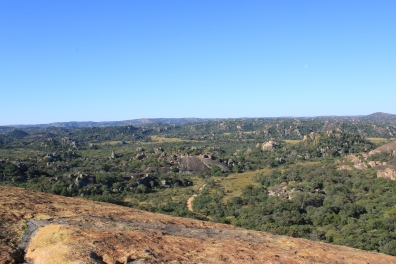 Matobo is derived from a term that means “bare stones” in the local Kalanga language. The name was popularised by King Mzilikazi, who led a migrating Ndebele group that settled in the area around 1832 (Burrett et al., 2016). The colonial settlers bastardized it into a number of variations such as Matopo, Matopo Hills or Matopos. Located in south-western Zimbabwe, the Matobo UNESCO World Heritage Landscape forms the southwest margin to the Zimbabwean granitic shield. It lies at an altitude between c. 1200 and 1500 meters above sea level, at the border of the lowveld biome that makes the Limpopo-Shashe-Confluence-Area, the area of the three frontiers between South Africa, Botswana and Zimbabwe. Topographically, the Matobo comprises a series of hills…
Matobo is derived from a term that means “bare stones” in the local Kalanga language. The name was popularised by King Mzilikazi, who led a migrating Ndebele group that settled in the area around 1832 (Burrett et al., 2016). The colonial settlers bastardized it into a number of variations such as Matopo, Matopo Hills or Matopos. Located in south-western Zimbabwe, the Matobo UNESCO World Heritage Landscape forms the southwest margin to the Zimbabwean granitic shield. It lies at an altitude between c. 1200 and 1500 meters above sea level, at the border of the lowveld biome that makes the Limpopo-Shashe-Confluence-Area, the area of the three frontiers between South Africa, Botswana and Zimbabwe. Topographically, the Matobo comprises a series of hills… -
The History of Research at the Matobo Hills
En savoir plus...
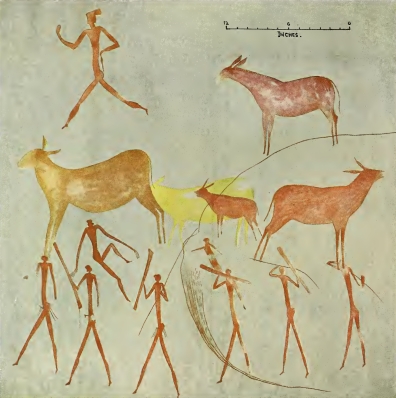 Matobo has a long history of archaeological research, since the beginning of the 20th century when the first European archaeologists begun to work in the region, and especially the rock art (N. Jones, M.C. Burkitt, L.A. Armstrong, C. Cooke). In other regions, traditional laws within local communities protected heritage sites, including rock art, for centuries (Makuvaza, 2014). Such a system must have existed in Matobo as well, which would explains the high number and exceptional preservation of the rock art sites at present (Ranger, 1999; Hubbard, 2018). Until the 1980s, archaeological research was driven by the building of the regional Stone Age chrono-cultural sequence and rock art chrono-stylistic sequence. In such purpose the two first generations of prehistorians made attempts…
Matobo has a long history of archaeological research, since the beginning of the 20th century when the first European archaeologists begun to work in the region, and especially the rock art (N. Jones, M.C. Burkitt, L.A. Armstrong, C. Cooke). In other regions, traditional laws within local communities protected heritage sites, including rock art, for centuries (Makuvaza, 2014). Such a system must have existed in Matobo as well, which would explains the high number and exceptional preservation of the rock art sites at present (Ranger, 1999; Hubbard, 2018). Until the 1980s, archaeological research was driven by the building of the regional Stone Age chrono-cultural sequence and rock art chrono-stylistic sequence. In such purpose the two first generations of prehistorians made attempts… -
Recent and On-Going Researches at the Matobo Hills
En savoir plus...
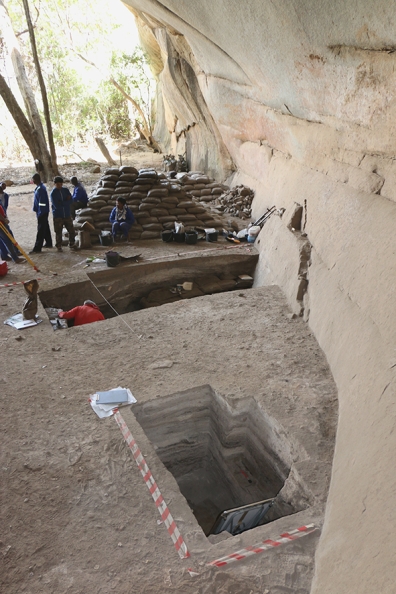 Thanks to a long history of research, and exceptional archaeological records, Matobo is one of the premier places for Stone Age research in southern Africa. Still, it is lagging behind other regions due to the absence of absolute chronology, detailed technological analysis, and geoarchaeological studies. Dating and chronological sequencing of the rock art, in particular, have remained key outstanding issues, in Matobo as more broadly in southern Africa (Nhamo and Bourdier, 2019; Porraz et al., to be published). Since 2017 the interdisciplinary research program MATOBART (coordinated by Bourdier, Machiwenyika, Nhamo, Porraz) is reinvestigating the Matobo Hills with the ambition to revise and precise the Stone Age cultural dynamics, combining rock art and the other spheres of material culture (Bourdier, 2019).…
Thanks to a long history of research, and exceptional archaeological records, Matobo is one of the premier places for Stone Age research in southern Africa. Still, it is lagging behind other regions due to the absence of absolute chronology, detailed technological analysis, and geoarchaeological studies. Dating and chronological sequencing of the rock art, in particular, have remained key outstanding issues, in Matobo as more broadly in southern Africa (Nhamo and Bourdier, 2019; Porraz et al., to be published). Since 2017 the interdisciplinary research program MATOBART (coordinated by Bourdier, Machiwenyika, Nhamo, Porraz) is reinvestigating the Matobo Hills with the ambition to revise and precise the Stone Age cultural dynamics, combining rock art and the other spheres of material culture (Bourdier, 2019).…


